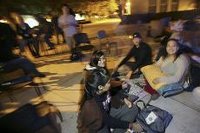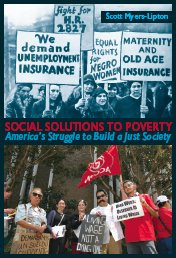Based on the research I conducted for the book, “Social Solutions to Poverty,” I have written a working proposal entitled the “Gulf Coast (GC) Civic Works Project.” The GC Civic Works Project has the dual goal of rebuilding New Orleans and the Gulf Coast, as well as restoring faith in the government’s social compact with its citizens.
The Proposal:
The GC Civic Works Project will hire 100,000 Gulf Coast residents to rebuild New Orleans and the surrounding region. The residents, who will be given subsidized tickets back to their neighborhoods, will build and repair houses, schools, parks, and other civic buildings and spaces.
The Gulf Coast Civic Works Project accomplishes 4 things:
- provide our citizens with living wage jobs,
- make housing available for themselves and their communities,
- restore a sense of personal empowerment and hope, something which has been stolen from our people, and
- restore faith among our citizenry of the government’s ability to respond to the needs of its people through a public-private partnership.
Projected Cost:
Based on a ratio of labor to materials of 80-20, and a wage rate of $12 per hour, the total cost of the Gulf Coast Civic Works Project is $3.125 billion. The projected cost of wages is $2.5 billion, while the cost of materials is $625 million.
Note that $3 billion is roughly 1/2 to 1/3 the cost of the war each month in Iraq according to the Congressional Budget Office. And while the Iraq War has been plagued with graft and corruption, similar large-scale civic projects have operated in the United States with little to no corruption.
Historical Precedent:
This is not the first time that the United States has faced massive social suffering. Our senior citizens, as well as our history books, have passed on to the current generation, the pain and suffering that so many people experienced during the Great Depression.
When Americans were faced with this crisis, the people realized that self-help initiatives alone would not solve the people’s problems, and they turned to solutions that got things done. During the Depression, people didn’t want a handout, but a hand up.
Point: The citizens of the Gulf Coast need solutions that offer a hand up. Let us provide them with the ability to rebuild their own communities.
The U.S. Government developed the Civil Works Administration (CWA) and the Civilian Conservation Corps (CCC). The CWA employed 4 million workers immediately in construction work (i.e., school repair, sanitation work, road building, etc.). Within 2 weeks of starting the project, 814,511 were on the payroll; within 2 months, 4.2 million were working.
Point: If the US can put 1 million people to work in 6 weeks in 1935, we can immediately put 100,000 people to work today in the Gulf Coast.
The Works Project Administration (WPA) replaced the CWA. In its 7-year history, the WPA employed a total of 8 million people and its accomplishments were many: the WPA built or improved 5,900 schools, 2,500 hospitals, and 13,000 playgrounds.
Point: Just as the WPA rebuilt America in the 1930s, the GC Civic Works Project can rebuild New Orleans and the Gulf Coast today.
The CCC provided the opportunity for 500,000 young men (ages 18 to 25) to work on environmental conservation projects at 2,600 camps each year. The goal was to employ restless and discouraged young men, many of whom had previously roamed the nation looking for work. In addition to their salary, the youth provided educational assistance.
Point: We must engage the youth of the region to rebuild their communities and provide them with skill-building initiatives that lead to self-reliance.
Concluding Thoughts:
Sixty-eight years ago, Langston Hughes said, “O, yes, I say it plain, America never was America to me, And yet I swear this oath-- America will be!”
Let us work together to make America be.
Please feel free to share this working proposal with your closest 1,000 friends! A ground swell of citizen support for this vision will change the direction of the country.
Let's encourage the new Congress to rebuild the Gulf Coast utilizing proven methods that get things done.








